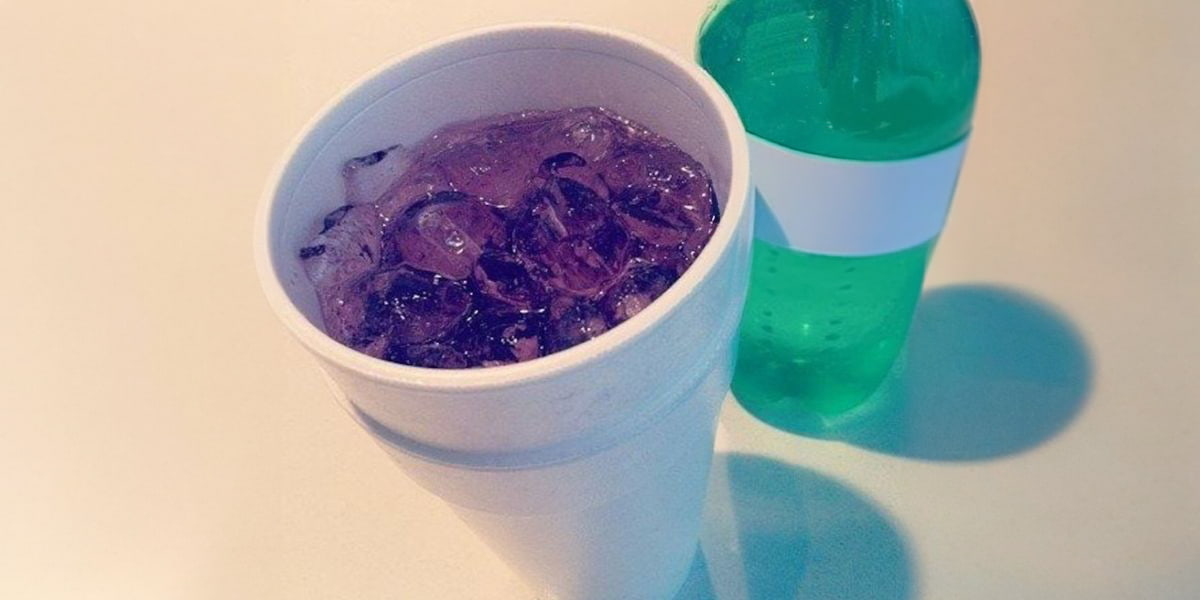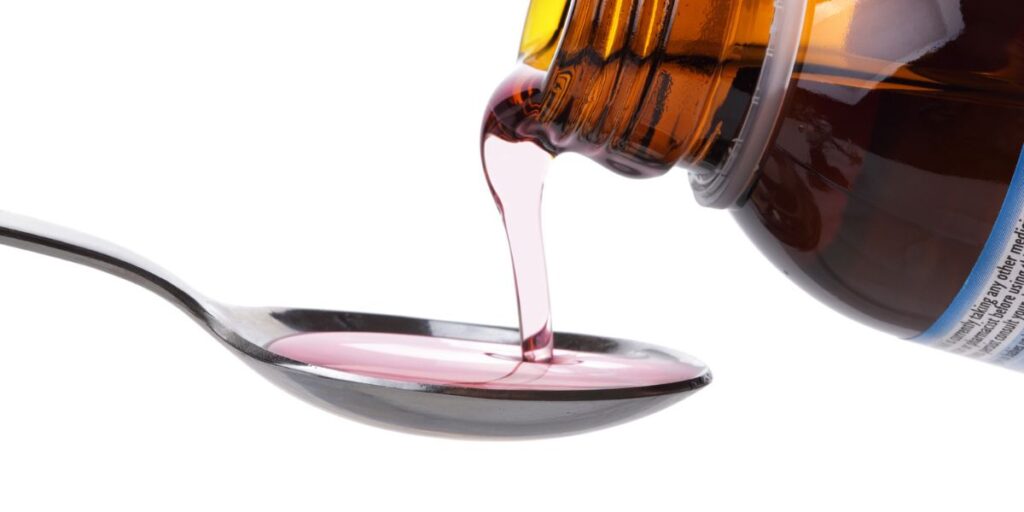Lean Drug Side Effects and Abuse


The famous drug commonly referred to as lean, or by its street names purple drank and sizzurp, is frequently perceived as a fun recreational choice within hip-hop culture and among their young adult audience. However, the harmful side effects of this substance contribute to severe long-term health complications and are responsible for numerous overdose deaths each year.
Lean significantly impacts the opioid crisis because of its active ingredient, codeine— an opioid. No matter how small the dose, opioids present serious side effects, which intensify when combined with alcohol or other drugs, a common habit among lean users.
Lean consists of prescription-strength cough syrup with codeine mixed with soft drinks, such as Sprite, and often includes alcohol and candy. It’s popular because it’s easy to make, has a pleasant taste, and is easily disguised in public and social settings.
Sizzurp has established a significant presence in pop culture and social media thanks to widespread attention from the media. It began gaining popularity in the 1990s, particularly within southern hip-hop communities and became closely associated with the chopped-and-screwed music style from Houston, Texas.
Recently, lean has achieved mainstream recognition, with artists such as Lil Wayne and Mac Miller frequently highlighting it in their lyrics, public events, and interviews. Pop icons like Justin Bieber and Juice WRLD have openly shared their battles with lean abuse and addiction. Tragically, both Mac Miller and Juice WRLD passed away because of accidental overdoses that involved multiple substances.
What Is Lean?
Lean, commonly called purple drank or sizzurp, is a concoction made from prescription cough syrup, soft drinks, and flavored candy.
Sizzurp got its name from its common effect on users, causing them to become drowsy and need to lean against something for support. Often, people add alcohol to intensify its impact.

Lean Slang
Lean is also commonly known by several other names, including:
- Player potion
- Sip-sip
- Dirty Sprite
- Oil
- Purple jelly
- Purp
- Texas tea
- Drank
- Sizzurp
- Purple drank
Despite being composed of legal and easily obtainable ingredients, purple drank remains an addictive substance with potentially life-threatening side effects that can result in a fatal overdose.
What Color Is Lean?
The term purple drank for lean originates from the purple hue of certain prescription cough syrups used in the mixture, giving lean its characteristic color. However, the color of lean can vary based on the ingredients mixed with it. For instance, some variations mixed with both purple and red syrups are known as red lean.
What’s in Lean?
Lean is a liquid concoction made from prescription-strength cough medicine containing codeine and promethazine, combined with soft drinks, hard candy, and occasionally alcohol. Codeine, an opiate, is the active ingredient in lean responsible for the addictive quality of purple drank, inducing its euphoric effects.
Codeine, a less potent opioid compared to others like morphine and oxycodone, remains a highly addictive central nervous system depressant with potentially lethal effects at high doses. Cough syrups with codeine are regulated and require a prescription, which can make them hard to obtain. Alcohol is often added to sizzurp to enhance its effects, as it is also a depressant of the central nervous system.
In the absence of codeine, numerous people resort to cough and cold drugs that contain dextromethorphan, also referred to as DXM. This is a central nervous system suppressant that provides sedative impacts akin to those of codeine.
The National Institute on Drug Abuse (NIDA) highlights dextromethorphan as a misused, over-the-counter medication, especially when combined with alcohol and marijuana.
Consuming cough suppressants containing dextromethorphan directly from the bottle to achieve a high is known as robotripping. However, this method is less prevalent than blending it with soda to create lean.
Sprite is the most frequently used soft drink for mixing lean, although other sodas are also popular depending on personal taste preferences. The flavoring and carbonation of these beverages make lean more palatable. Carbonation accelerates the absorption of drugs and alcohol into the bloodstream, enhancing the onset of lean’s effects. Additionally, candies such as Jolly Ranchers are often added to the mix to dissolve and improve the flavor, masking the taste of cough syrup and alcohol.
Consuming large amounts of central nervous system depressants can lead to dangerous side effects and potentially fatal overdoses. Lean is particularly hazardous because people often do not measure the quantities they mix and tend to consume it quickly before feeling the effects. This means that by the time one realizes they have ingested too much, they might already be experiencing symptoms of an overdose.
Lean Effects
The name lean comes from how users often lean over, finding it hard to stay awake. This happens because the prescription opioids in lean affect the brain and central nervous system. They cause feelings of happiness, calmness, and a strong body buzz.
Other immediate effects of lean consumption include:
- Numbness
- Slurred speech
- Dizziness
- Blurred vision
- Drowsiness
- Poor coordination
- Slowed breathing
- Loss of balance
- Nausea
- Lethargy
- Slow reflexes
The effects of sizzurp typically begin 30 to 45 minutes after consumption and can last up to six hours. However, the experience can be unpredictable because many users continuously sip on the mixture or combine it with other drugs and alcohol.
Lean Side Effects
There’s a common misconception that lean is safer than other drugs and prescription opioids because of its perceived lower potency. Nonetheless, the reality is that codeine, the primary component in lean, is an opioid and bears the same hazards and adverse effects as other prescribed opioids.
Drinking sizzurp can be particularly dangerous because measuring and monitoring the amount consumed is difficult, especially if someone else has prepared it. The addition of alcohol and significant quantities of sugar can further exacerbate the side effects, increasing the risk.
Side effects of lean consumption can include:
- Confusion
- Dry mouth
- Memory loss
- Headaches
- Diarrhea
- Vomiting
- Stomach aches
- Constipation
- Irregular heartbeat
- Nausea
Repeated and long-term consumption of lean can lead to additional, enduring health effects.
Potential adverse effects from prolonged consumption of lean include:
- Increase in weight
- Diabetic conditions
- Infections in the urinary tract
- Damage and decay of teeth
- Persistent respiratory issues
- Irregular heartbeats
- Loss of memory
- Convulsions
- Symptoms of withdrawal
Combining purple drank with alcohol and other drugs can exacerbate and complicate the side effects, as well as worsen any pre-existing mental health and medical conditions.
Like many drugs, regular consumption of sizzurp leads to increased tolerance, requiring users to consume more over time to achieve the same high and enjoyment. A concerning trend among long-term users is the shift towards more potent opioids as their addiction intensifies.

Lean Addiction Treatment at White Oak Recovery Center
If you are dealing with an addiction to lean and a co-occurring mental health condition, White Oak Recovery Center can help you reclaim your life from substance abuse. WORC offers integrated, evidence-based addiction treatment designed for lifelong recovery.
White Oak Recovery Center offers dual diagnosis treatment and on-site medical detox services. Our 24-hour medical team provides support for a safe withdrawal process, preparing you for a full and compassionate treatment program.
WORC’s transformative treatments, therapies, and support groups are designed to address and heal the underlying causes of your addiction. Each treatment plan is tailored to your needs, helping build the confidence and skills necessary to tackle future challenges.
Reach out to us now if you have any questions or worries. Our treatment specialists are eager to help you start your path to healing.

Am I covered for addiction treatment?
Your insurance may cover treatment. Call now for an entirely free and confidential assessment. Recovery starts with a phone call.

- Palamar, Joseph J., “Use of ‘Lean’ Among Electronic Dance Music Party Attendees.” Am J Addict., Sept. 2019.
- Eysenbach, Gunther, et al., “Representations of Codeine Misuse on Instagram: Content Analysis.” JMIR Public Health and Surveillance, Mar. 2018.
- Peechakara, Basil V, et al., “Codeine.” StatPearls: National Library of Medicine, Feb. 2024.
- “Prescription Opioid Drug Facts.” National Institute on Drug Abuse, Jun. 2021.
Medical Disclaimer:







